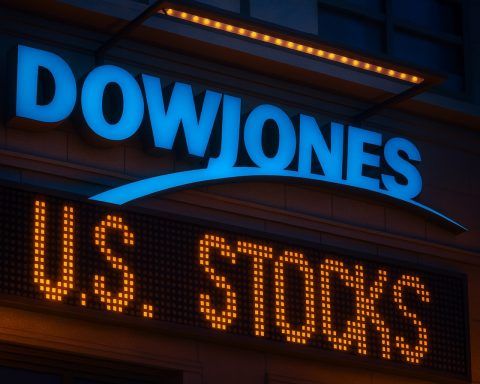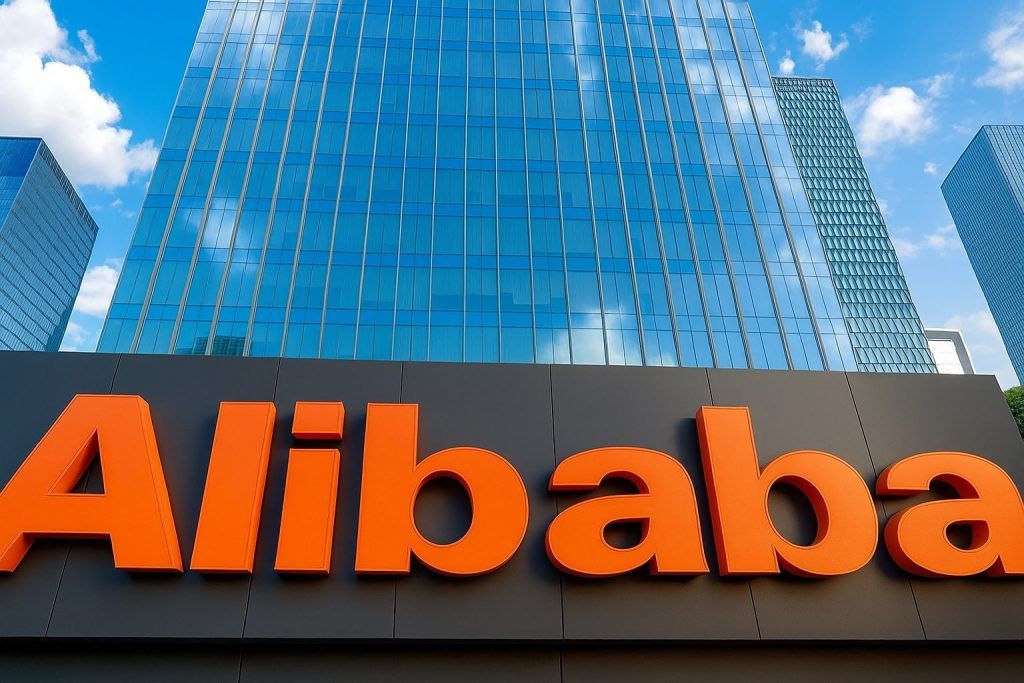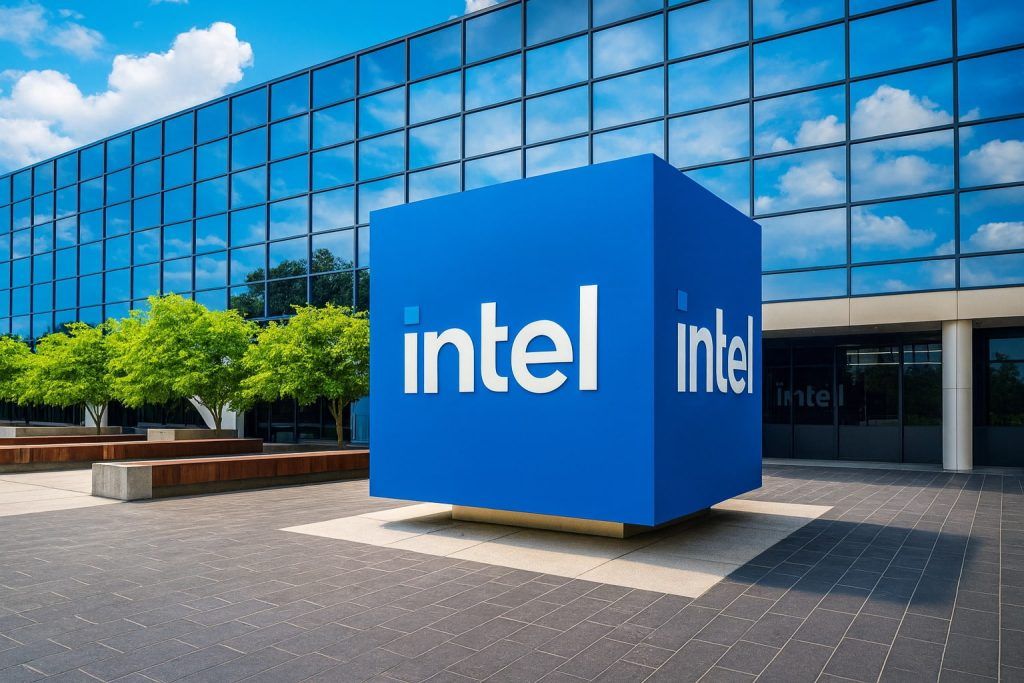Meta description: Walmart stock (WMT) is trading near record highs on November 21, 2025, after a powerful post‑earnings rally, a guidance hike, a planned move to Nasdaq and a wave of analyst upgrades. Here’s what today’s investors need to know.
Walmart stock price today: holding near the highs after a 6.5% surge
Walmart Inc. (NYSE: WMT) is consolidating near record territory in Friday trading after a huge post‑earnings move.
As of the latest trade on November 21, 2025, Walmart shares are changing hands around $106.95, down a fraction (about 0.2%) from Thursday’s close of roughly $107.11. The stock has traded between $106.64 and $108.15 so far today, after opening at about $108.00.
Over the past year, WMT has moved in a range of roughly $79.81 to $109.57, putting today’s price just a couple of percent below its 52‑week high. [1]
The modest pullback comes after Walmart:
- Jumped about 6.3%–6.5% on Thursday, making it the top performer in both the Dow Jones Industrial Average and the S&P 500 following its earnings beat and guidance raise. [2]
- Has gained roughly high‑teens percent year‑to‑date, comfortably outpacing both the S&P 500 and the broader retail sector. [3]
In a week when major U.S. indexes swung sharply lower on concerns about AI valuations and tech stocks, Walmart’s ability to hold onto its gains has made it one of the clear defensive winners in the market. [4]
Q3 FY26 earnings: revenue and EPS beat, powered by digital growth
Walmart’s November 20 earnings report for the third quarter of fiscal 2026 (the 13‑week period ended October 31, 2025) was the catalyst for this week’s move in WMT stock. [5]
Key financial highlights:
- Revenue: about $179.5 billion, up 5.8% year over year (around 6% in constant currency), beating analyst expectations of roughly $177–$178 billion. [6]
- Adjusted EPS: approximately $0.62, ahead of consensus estimates near $0.60 and up from about $0.58 a year ago. [7]
- Adjusted operating income: up about 8% in constant currency, even as reported GAAP income was weighed by one‑off charges (including share‑based compensation at PhonePe). [8]
Operationally, the story is about scale plus digital:
- Walmart U.S. comparable sales rose 4.5%, driven by both higher traffic and ticket. [9]
- Global e‑commerce sales surged around 27%, marking the seventh consecutive quarter of 20%‑plus online growth. U.S. e‑commerce alone grew about 28%. [10]
- Membership income increased roughly 16–17%, while Walmart’s global advertising business (including Walmart Connect and Vizio) grew more than 50% year over year. [11]
- International net sales climbed about 10.8%, with strong contributions from Flipkart in India, Walmex in Mexico and operations in China, while Sam’s Club delivered low‑single‑digit net sales growth and strong membership gains. [12]
UBS estimates that Walmart now generates roughly $693 billion in trailing 12‑month revenue, underscoring its position as the world’s largest retailer. [13]
Analysts and industry observers have broadly framed the quarter as a validation of Walmart’s omnichannel strategy: using its vast store base as fulfillment hubs, leaning into marketplace and advertising revenue, and attracting higher‑income shoppers looking for value as economic pressures linger. [14]
Guidance raised again: solid 2026 outlook despite consumer stress
Crucially for the stock market, Walmart raised its full‑year fiscal 2026 guidance again, signaling confidence heading into the holiday period:
- Net sales growth: now expected at 4.8%–5.1% in constant currency, up from prior guidance in the mid‑4% range. [15]
- Adjusted operating income growth: targeted at around 4.8%–5.5% in constant currency. [16]
- Adjusted EPS: guided to $2.58–$2.63, up from a prior range around $2.52–$2.62. [17]
This “beat and raise” pattern is notable because it comes against a cautious consumer backdrop. Walmart and multiple research outlets highlighted that:
- Lower‑ and middle‑income U.S. households remain under pressure from persistent inflation, tariffs and a softer job market, even as wealthier shoppers continue to trade down to Walmart for value. [18]
- Despite this, Walmart is gaining market share, especially in grocery and essentials, helping offset weakness in more discretionary categories that have hurt rivals like Target and some home‑improvement chains. [19]
Morningstar and others have described the shares as “expensive” given the rich valuation, but they also acknowledge that Walmart’s digital momentum and defensive positioning justify part of that premium. [20]
Tariffs, inflation and pricing: management is “playing offense”
Thursday’s earnings call and follow‑up coverage added important nuance on tariffs and pricing, a key risk watched by WMT investors:
- Walmart executives said overall inflation across its business is now running in the “low‑1%” range, a significant cooling from earlier peaks, with notable relief in many food categories. [21]
- However, imported non‑food goods—household items, apparel, electronics—remain vulnerable to tariff‑driven cost pressure, which could still lead to price increases on some everyday products. [22]
- Incoming CEO John Furner emphasised that Walmart has seen less tariff impact than feared earlier in the year, thanks to supply‑chain discipline and inventory management, but warned it remains a “lingering variable.” [23]
To maintain its value proposition:
- Walmart is leaning into roughly 7,400 active “rollbacks” (temporary price cuts) and absorbing part of tariff costs, which UBS estimates is shaving about 30 basis points off margins in 2025. [24]
- UBS characterises this as Walmart “playing offense”—trading a bit of margin today in exchange for long‑term market share and customer loyalty. [25]
For shareholders, this means near‑term margin expansion is likely to be gradual, even as revenues and traffic hold up well.
From NYSE to Nasdaq: a tech‑tilted narrative and the biggest exchange transfer ever
One of the most talked‑about pieces of Walmart news this week is not strictly about earnings: it’s about where the stock trades.
On November 20, Walmart announced it will transfer its primary stock listing from the New York Stock Exchange (NYSE) to the Nasdaq Global Select Market, with trading on Nasdaq expected to begin December 9, 2025 under the same ticker “WMT.” [26]
Key points about the move:
- Multiple sources, including Nasdaq and Business Wire, confirm that this will be the largest exchange transfer ever by market value, with Walmart’s capitalization around $850+ billion. [27]
- Walmart’s leadership says the switch reflects a “people‑led, tech‑powered” strategy, highlighting investments in AI, automation and data‑driven retail experiences—from automated fulfillment centers to AI‑assisted software development and personalized shopping tools. [28]
- Analysts note the move could pave the way for future inclusion in the Nasdaq‑100 index, which might attract additional flows from passive and tech‑focused funds over time. [29]
Functionally, nothing changes about Walmart’s underlying business because of the listing venue. But symbolically, aligning with a tech‑heavy exchange underscores Walmart’s effort to be seen less as a traditional brick‑and‑mortar chain and more as a technology‑enabled retail platform.
CEO transition: Doug McMillon’s digital legacy and the AI‑driven next chapter
Walmart’s stock story is also a leadership story.
- Long‑time CEO Doug McMillon is set to step down early next year, with Walmart U.S. chief John Furner scheduled to take over as CEO on February 1, 2026. [30]
- Industry coverage highlights McMillon’s decade‑long push into e‑commerce, global expansion and supply‑chain modernization. The Q3 results—with 27% global e‑commerce growth, rising online profitability and strong omnichannel metrics—are being cited as proof that his strategy has taken root. [31]
Looking ahead, Furner is expected to lean even further into AI and automation:
- On the earnings call, Walmart executives pointed to “agentic AI” tools like the company’s “Sparky” shopping assistant, and pilots such as “Carrito Listo” in Chile, where AI builds shopping baskets and sends them via WhatsApp for customers to approve or adjust. [32]
- This focus dovetails with the Nasdaq move and reinforces the idea that Walmart’s future growth may be driven as much by software, data and advertising as by adding more physical stores.
For WMT shareholders, the CEO transition is being framed not as a change in direction but as the next phase of the same tech‑heavy, omnichannel strategy.
Wall Street reaction: price targets jump as consensus stays bullish
Friday’s session has brought another wave of upbeat analyst commentary on Walmart stock.
Recent rating and target changes include:
- Baird raised its price target to $121 (from $110) while maintaining an “Outperform” rating on November 21. [33]
- BMO Capital Markets boosted its target to $125 (from $110) and also kept an “Outperform” rating, implying roughly mid‑teens upside from recent prices. [34]
- UBS reiterated a “Buy” rating with a $122 target, highlighting 8% FX‑neutral EBIT growth, strategic pricing investments and Walmart’s ability to gain share while returning capital to shareholders. [35]
- Other firms—including Guggenheim, Evercore ISI, Raymond James, BTIG and Truist—have also raised price targets into the $115–$125 range in the wake of the Q3 report. [36]
According to MarketBeat’s compilation:
- Around 31 analysts rate Walmart a “Buy” and just one rates it “Hold,” giving the stock an overall “Moderate/Outperform” consensus.
- The average 12‑month price target sits near $117, modestly above today’s price, with the most optimistic targets in the high‑$120s. [37]
However, not every voice is unambiguously bullish. A Zacks analysis released today notes that Walmart’s forward P/E in the high‑30s is above both its own recent history and the average for the retail‑wholesale sector, arguing that much of the good news may already be reflected in the stock. [38]
Walton family net worth hits $453 billion as Walmart shines
Another headline drawing attention on November 21 is about Walmart’s founding family rather than the company itself.
A 24/7 Wall St. report estimates that five members of the Walton family now have a combined net worth of about $453 billion, surpassing even Elon Musk’s reported fortune. [39]
A few notable points from that analysis:
- Three of Sam Walton’s children—Jim, Rob and Alice Walton—each hold personal net worths above $120 billion.
- In total, the Waltons collectively own around 49% of Walmart’s outstanding shares, giving them enormous exposure to the company’s performance and a powerful alignment with long‑term shareholders. [40]
The article notes that Walmart’s strong quarter and guidance raise are major reasons the family’s wealth continues to climb, as the company pulls further ahead of other big‑box retailers and leans into digital and convenience‑oriented services. [41]
High insider ownership can be a double‑edged sword: it suggests long‑term commitment and aligned incentives, but also means public investors are minority holders in a tightly controlled company.
Valuation check: a defensive winner at a premium price
Between the earnings beat, the guidance hike, the Nasdaq move and the analyst upgrades, it’s clear why Walmart stock is in demand this week. But for investors looking at WMT today, valuation is a key discussion point.
Recent data and commentary suggest:
- WMT trades at roughly 40x trailing earnings and high‑30s on a forward P/E basis, a premium to both the broader consumer‑staples group and many retail peers. [42]
- Consensus price targets in the mid‑teens above today’s price imply moderate upside, not a deep value opportunity. [43]
- Bulls argue that Walmart deserves this premium because of:
- Consistent mid‑single‑digit revenue growth and high‑single‑digit adjusted operating income growth. [44]
- Rapidly expanding e‑commerce, advertising and membership businesses, which tend to be higher‑margin and more scalable. [45]
- Its role as a defensive play in a volatile macro environment, with value‑focused shoppers and higher‑income customers both gravitating to Walmart. [46]
Skeptics counter that any slowdown in comps, digital growth or margin progress could lead to a valuation reset, especially after such a strong run.
Key takeaways for investors watching Walmart stock today
Putting all of today’s news together, here’s how the Walmart story looks on November 21, 2025:
Bullish factors
- Stock near record highs after a roughly 6.5% post‑earnings surge, yet still with analyst targets pointing to some further upside. [47]
- Q3 FY26 results beat expectations on both revenue and EPS, with broad‑based strength across U.S., international and Sam’s Club segments. [48]
- Digital momentum remains strong, with high‑20s e‑commerce growth, robust advertising and rising membership income, all central to Walmart’s long‑term strategy. [49]
- The move to Nasdaq reinforces a tech‑forward narrative and may support inclusion in additional indexes and ETFs over time. [50]
- A broad wall of “Buy” ratings and rising price targets—from UBS, Baird, BMO and others—reflects strong institutional confidence. [51]
Risk and watch‑points
- Valuation is rich relative to many peers; Walmart is priced more like a tech‑enabled compounder than a traditional retailer, leaving less room for disappointment. [52]
- Tariffs and lingering inflation in non‑food categories remain a swing factor for margins and pricing, even as food inflation cools. [53]
- The company is making deliberate pricing investments and rollbacks that pressure margins in the short term, even if they build long‑term customer loyalty. [54]
- The CEO transition and rapid push into AI and automation add execution risk; Walmart must show it can scale these technologies without disrupting its core operations. [55]
Bottom line
On November 21, 2025, Walmart stock remains one of the standout stories in U.S. equities: a defensive retailer trading like a growth platform, fresh off a strong quarter, raising its outlook, shifting to Nasdaq and drawing continued support from Wall Street.
Whether that makes WMT a buy, hold or wait‑and‑see candidate depends on each investor’s risk tolerance and view on valuation. What’s clear is that today’s mix of earnings strength, structural digital growth and high expectations will keep Walmart firmly in focus for both short‑term traders and long‑term shareholders.
This article is for informational purposes only and does not constitute investment advice or a recommendation to buy or sell any securities. Always do your own research or consult a licensed financial adviser before making investment decisions.
References
1. www.marketbeat.com, 2. www.investopedia.com, 3. www.benzinga.com, 4. www.investopedia.com, 5. corporate.walmart.com, 6. www.investing.com, 7. www.investing.com, 8. www.investing.com, 9. www.investing.com, 10. www.grocerydive.com, 11. www.investing.com, 12. www.investing.com, 13. m.investing.com, 14. finviz.com, 15. www.investing.com, 16. www.investing.com, 17. www.investing.com, 18. www.reuters.com, 19. finviz.com, 20. www.morningstar.com, 21. www.benzinga.com, 22. www.benzinga.com, 23. www.benzinga.com, 24. m.investing.com, 25. m.investing.com, 26. www.businesswire.com, 27. www.nasdaqtrader.com, 28. www.reuters.com, 29. www.indmoney.com, 30. www.grocerydive.com, 31. www.grocerydive.com, 32. www.grocerydive.com, 33. www.gurufocus.com, 34. www.marketbeat.com, 35. m.investing.com, 36. m.investing.com, 37. www.marketbeat.com, 38. www.tradingview.com, 39. 247wallst.com, 40. 247wallst.com, 41. 247wallst.com, 42. www.marketbeat.com, 43. www.marketbeat.com, 44. www.investing.com, 45. www.grocerydive.com, 46. www.reuters.com, 47. www.investopedia.com, 48. www.investing.com, 49. www.grocerydive.com, 50. www.investopedia.com, 51. www.gurufocus.com, 52. www.tradingview.com, 53. www.benzinga.com, 54. m.investing.com, 55. www.grocerydive.com







